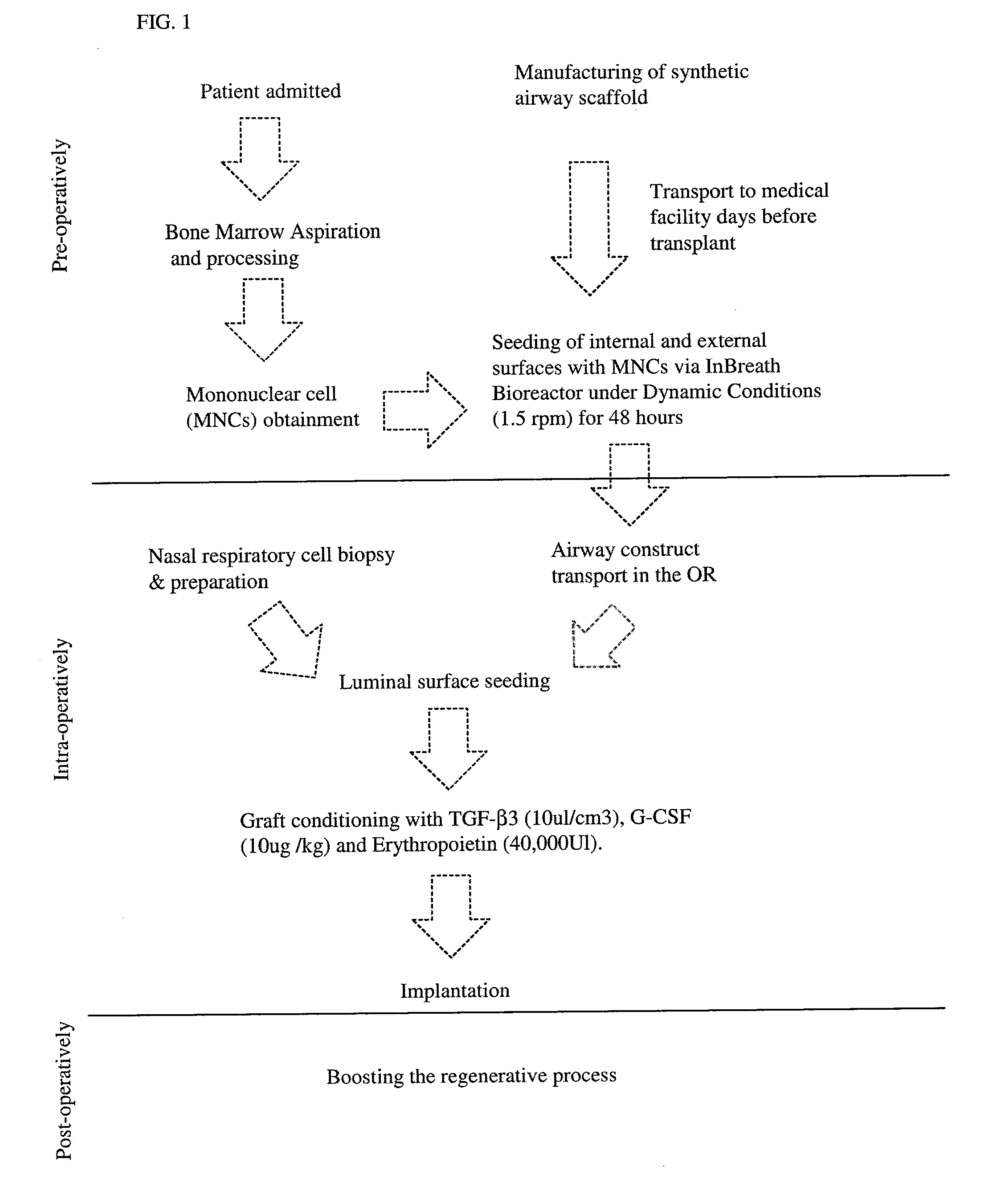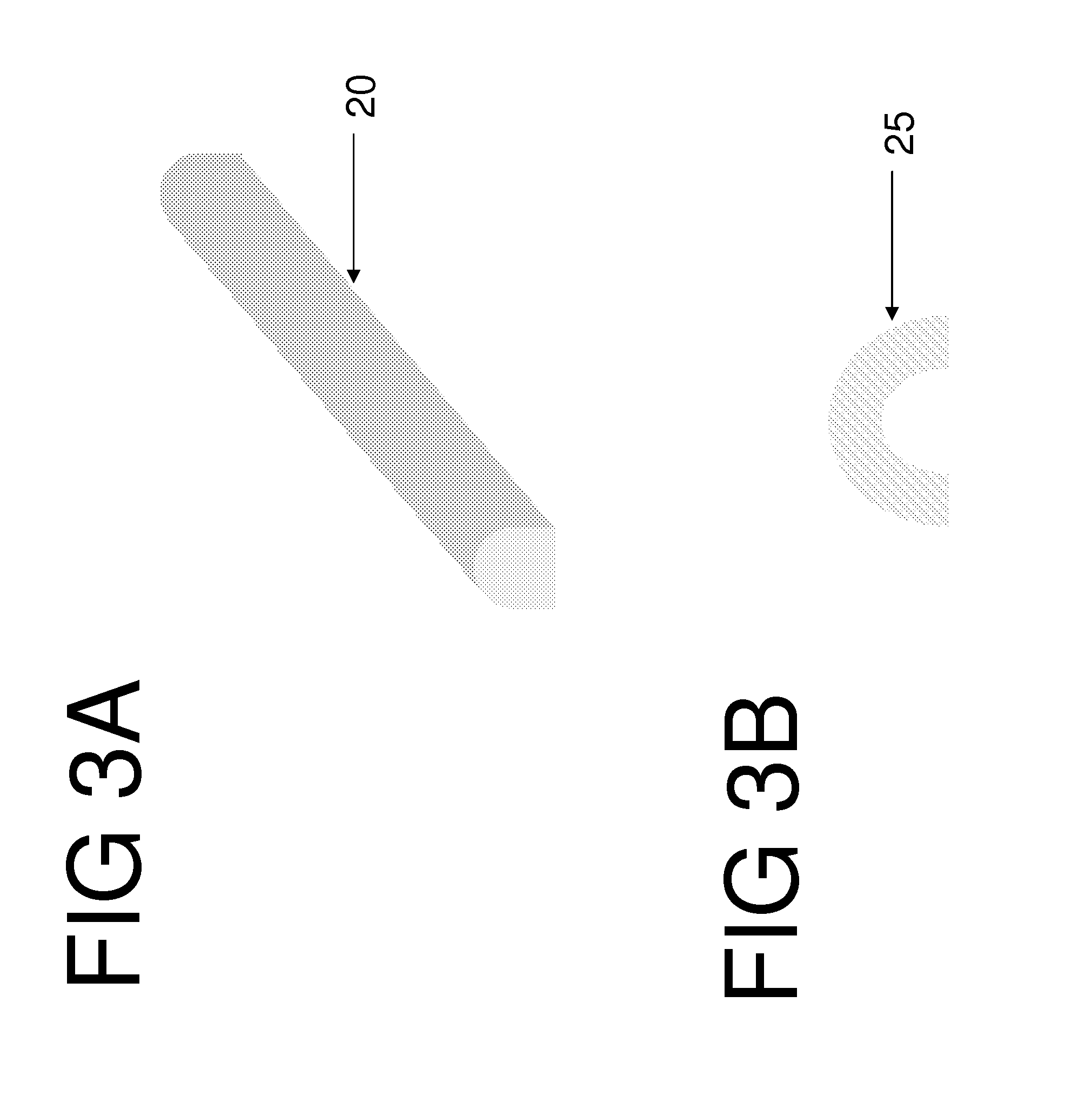Synthetic scaffolds and organ and tissue transplantation
a scaffold and organ technology, applied in the direction of tracheae, skeletal/connective tissue cells, prostheses, etc., can solve the problems of difficult or impossible large extent of tissue damage for surgical resection to be possible, and inability to remove diseased tissue, etc., to promote cartilage formation, promote cell mobilization and proliferation, and prevent apoptosis
- Summary
- Abstract
- Description
- Claims
- Application Information
AI Technical Summary
Benefits of technology
Problems solved by technology
Method used
Image
Examples
example 1
[0117]Production and transplantation of a biosynthetic-scaffold-based tracheal / bronchial transplant.
[0118]FIG. 1 outlines a general surgical procedure using a biosynthetic scaffold to replace a portion of an airway. In this example, a transplantation of the trachea using a synthetic bioengineered scaffold reseeded with autologous undifferentiated stem and respiratory cells was used as an intraoperative solution for a 36 year old male with a primary malignant tumor of the trachea (mucoepidermoid). The patient had been maximally treated with radiation therapy (70 Gy).
[0119]Based on actual CT scans and bronchoscopy, the tumor involved the last 4 cm of the trachea along with the bifurcation (right main bronchus>than the left). This scenario represented a contraindication to any surgical reconstruction using standard techniques.
[0120]A synthetic bioengineered matrix, reseeded with autologous undifferentiated stem and (nasal) respiratory cells, of appropriate size and morphology, was prep...
example 2
[0149]Nanocomposite bioengineered airway scaffold material:
[0150]The airway scaffold was designed using a synthetic material based on polyhedral oligomeric silsesquioxane (POSS) covalently bonded to poly(carbonate-urea)urethane (PCU) to form a nanocomposite that is fully haemo- and biocompatible.
[0151]The nano-topography surface of POSS-PCU nanocomposite polymers with elevated POSS nanocages and non-elevated PCU segments have been shown to promote cell proliferation. Extensive in vitro and in vivo validation studies on POSS-PCU have demonstrated that this nanocomposite polymer is non-toxic and biocompatible.
[0152]The POSS-PCU nanocomposite polymer has been extensively tested for its cytocompatibility, proving its ability to support the attachment and proliferation of numerous cell types including: chondrocytes, epithelial cells, mesenchymal stem cell, endothelial progenitor cells, and schwann cells.
[0153]The following experiments provide results for key cell types of a natural windp...
PUM
| Property | Measurement | Unit |
|---|---|---|
| Length | aaaaa | aaaaa |
| Length | aaaaa | aaaaa |
| Length | aaaaa | aaaaa |
Abstract
Description
Claims
Application Information
 Login to View More
Login to View More - R&D
- Intellectual Property
- Life Sciences
- Materials
- Tech Scout
- Unparalleled Data Quality
- Higher Quality Content
- 60% Fewer Hallucinations
Browse by: Latest US Patents, China's latest patents, Technical Efficacy Thesaurus, Application Domain, Technology Topic, Popular Technical Reports.
© 2025 PatSnap. All rights reserved.Legal|Privacy policy|Modern Slavery Act Transparency Statement|Sitemap|About US| Contact US: help@patsnap.com



